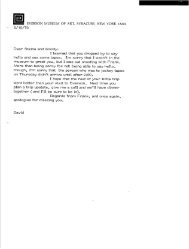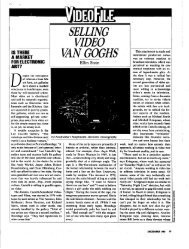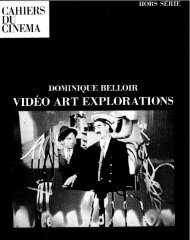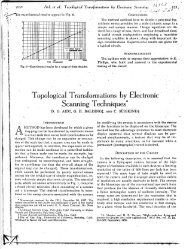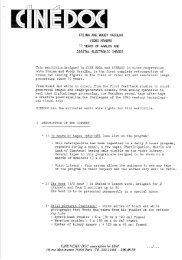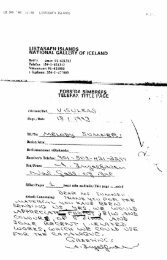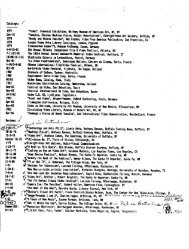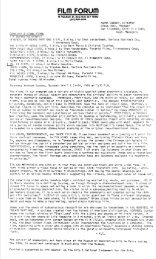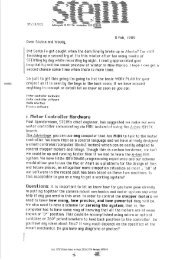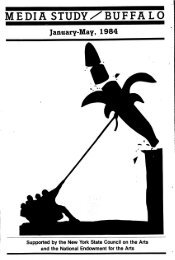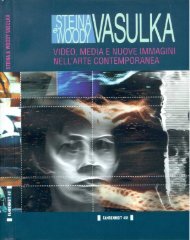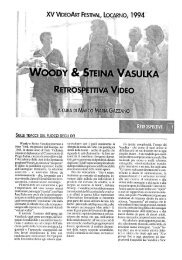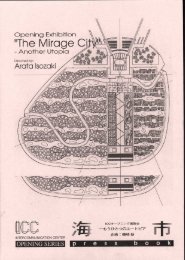Chapter 4: A HISTORY OF COMPUTER ANIMATION ... - Vasulka.org
Chapter 4: A HISTORY OF COMPUTER ANIMATION ... - Vasulka.org
Chapter 4: A HISTORY OF COMPUTER ANIMATION ... - Vasulka.org
You also want an ePaper? Increase the reach of your titles
YUMPU automatically turns print PDFs into web optimized ePapers that Google loves.
<strong>Chapter</strong> 4: A <strong>HISTORY</strong> <strong>OF</strong> <strong>COMPUTER</strong> <strong>ANIMATION</strong> 3/20/92 32<br />
programmed to follow the actions, such as walking, running, or spray<br />
painting . This is part of the promise of virtual reality .<br />
Benefits of Computerized Motion Control<br />
The introduction of a programming computer into the motion<br />
control complex accomplishes the same benefits as computerizing<br />
the animation stand : Analog recording media are replaced by digital<br />
ones . And the computer interface to the electric motor/shaft<br />
encoder commits one to programistic control . And herein lies an<br />
allegiance with the work of 3D graphics, CAD/CAM, robotics, and<br />
virtual reality . Aside from the repeatability and automation<br />
factors, the user may now direct the camera in terms of a language<br />
that describes the camera in a real-world manner and with real<br />
world terms . Another new advantage is that actions of the system,<br />
captured by the input mechanism and recorded, may now not only be<br />
played back, they may be edited also . It is also possible to elude<br />
either the input or output side of the full motion control model . For<br />
example one might employ a virtual camera and props to plan moves,<br />
and then use the motion control system to execute those moves with<br />
a real camera and props . Conversely, one might capture the<br />
parameters of a real camera move, and use those parameters to<br />
move a virtual camera . This is why the motion control paradigm is<br />
such a general purpose design (fig . 55) .<br />
55 . Motion control paradigm crystalizes a general purpose<br />
input/record/process/replay/output model . The example depicts a<br />
camera with two degrees of freedom, pan and tilt, along with a prop<br />
to be photographed . During live action photography two shaft<br />
encoders transmit these angular variations to the CPU, which<br />
records them . In the diagram the two tracks are displayed on the<br />
computer's CRT display, along with the images seen by the camera .<br />
During replay these angular variations are dispatched back to<br />
stepping motors which pan and tilt the head, following the<br />
movements made during the live action as exactly as possible (or<br />
following whatever movements the animator gives them) . In<br />
practice the shooting camera and the replay camera may be identical<br />
or different . The computer system may also be equipted with a<br />
virtual camera and prop, the dimensions and linkages of which are<br />
identical to the real camera, this synthetic environment is show at<br />
the top, and the view of the synthetic camera is show on the right of<br />
the CRT display . A key idea is that both the real camera and the<br />
virtual camera are controlled and notationally mediated by a<br />
common, identical computer graphic language, and that the



